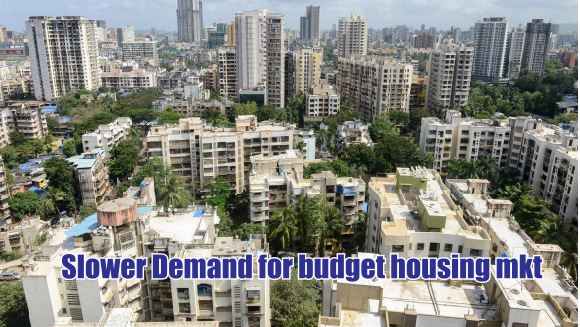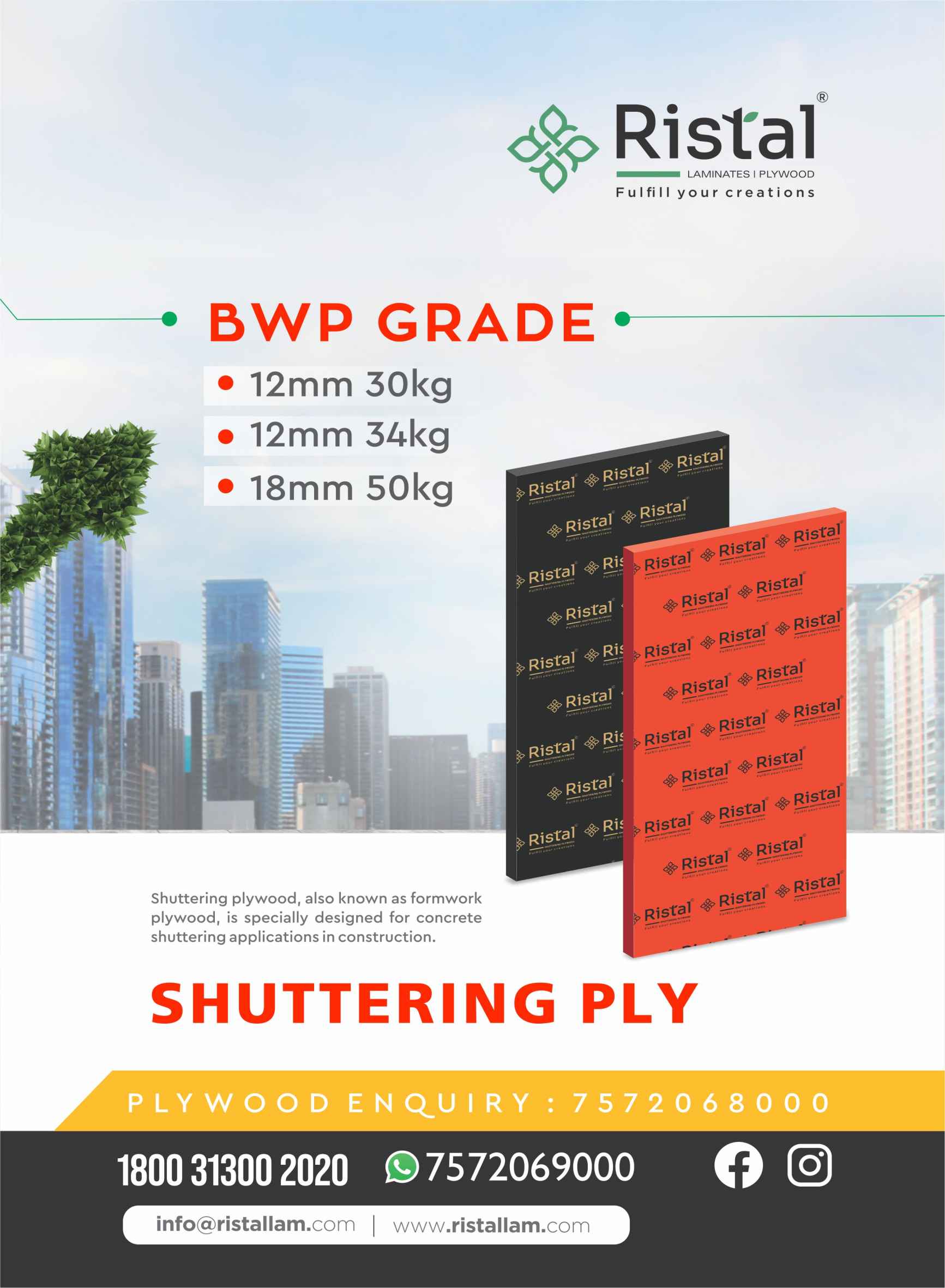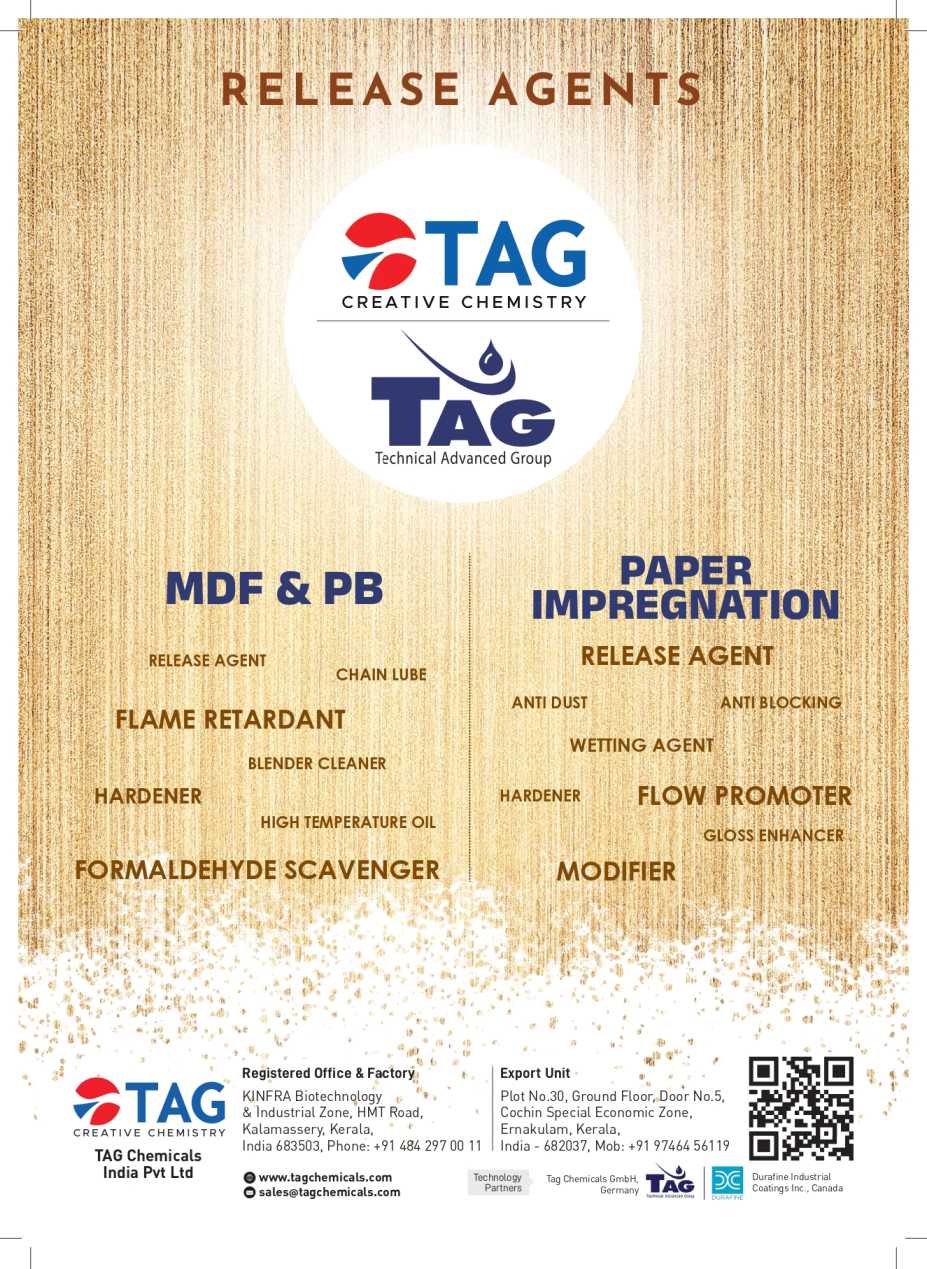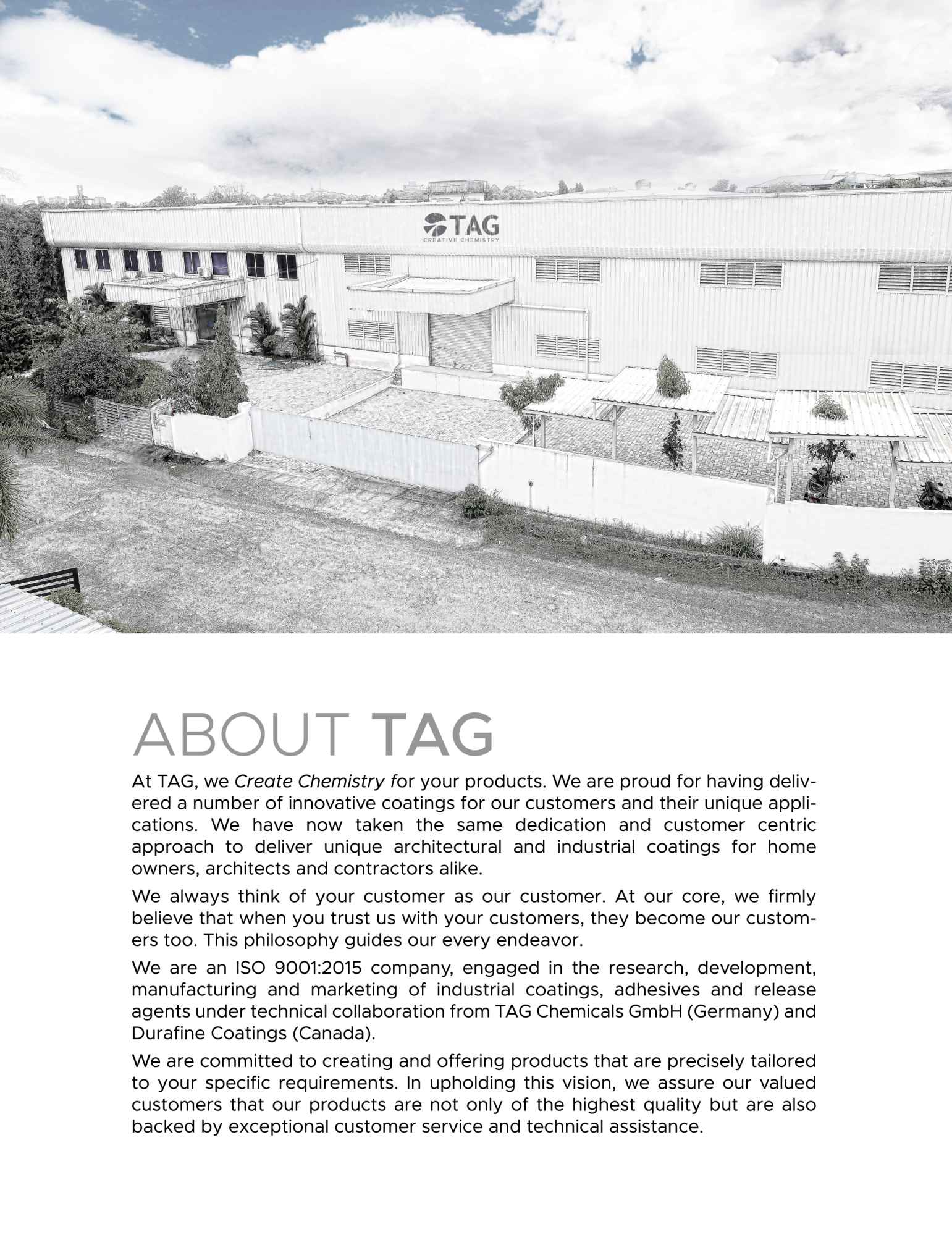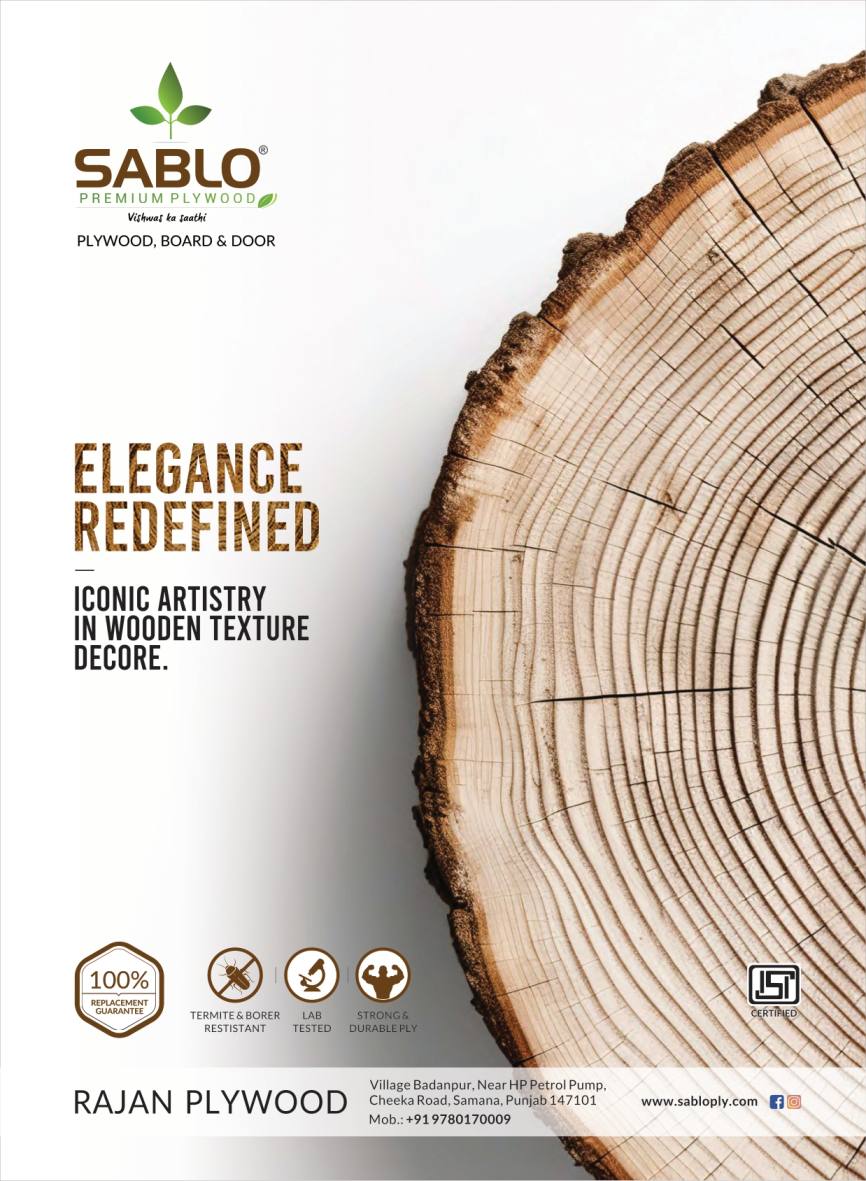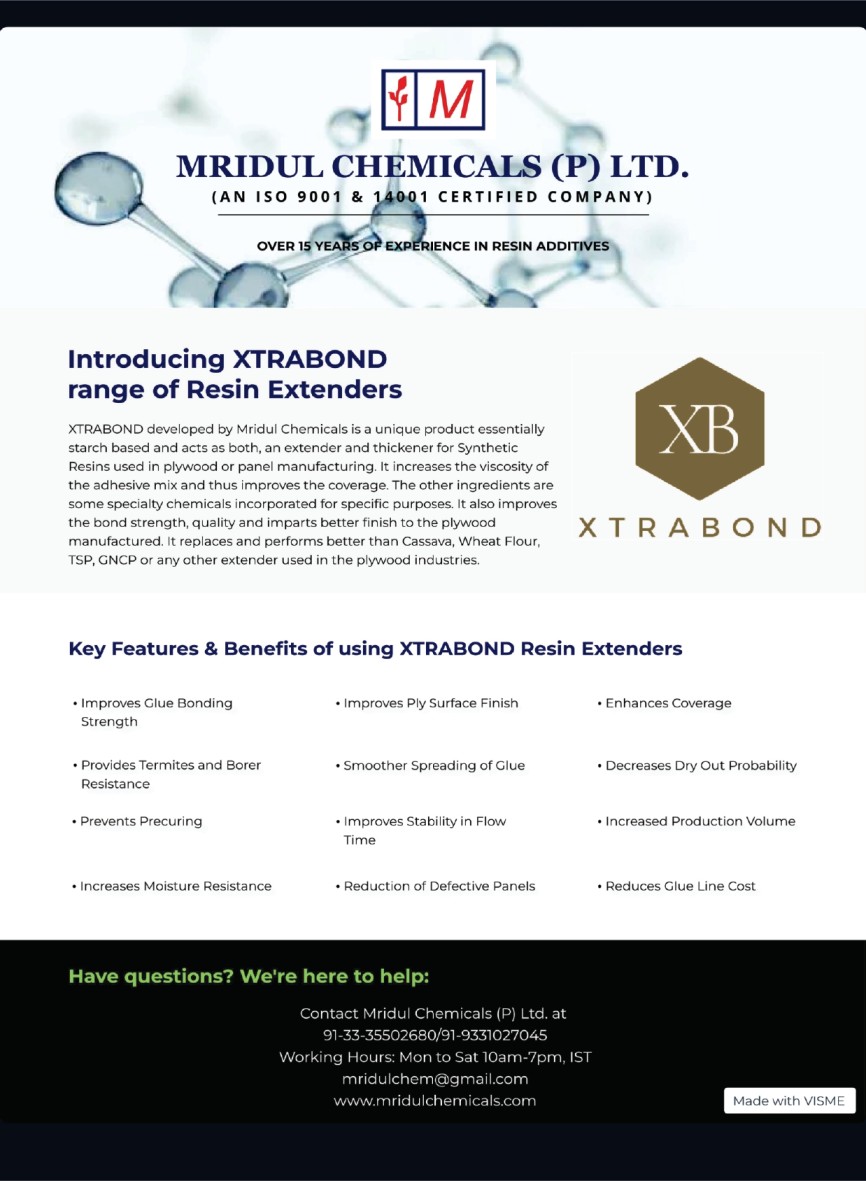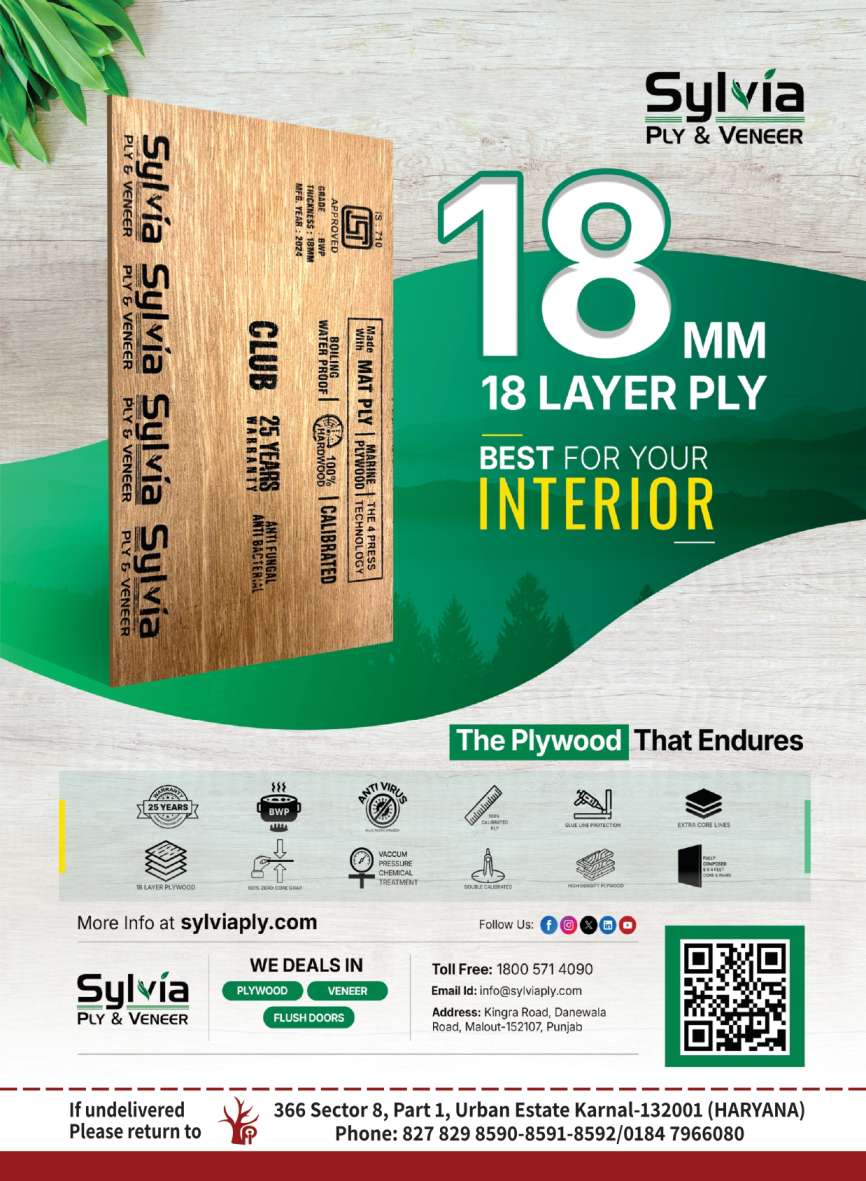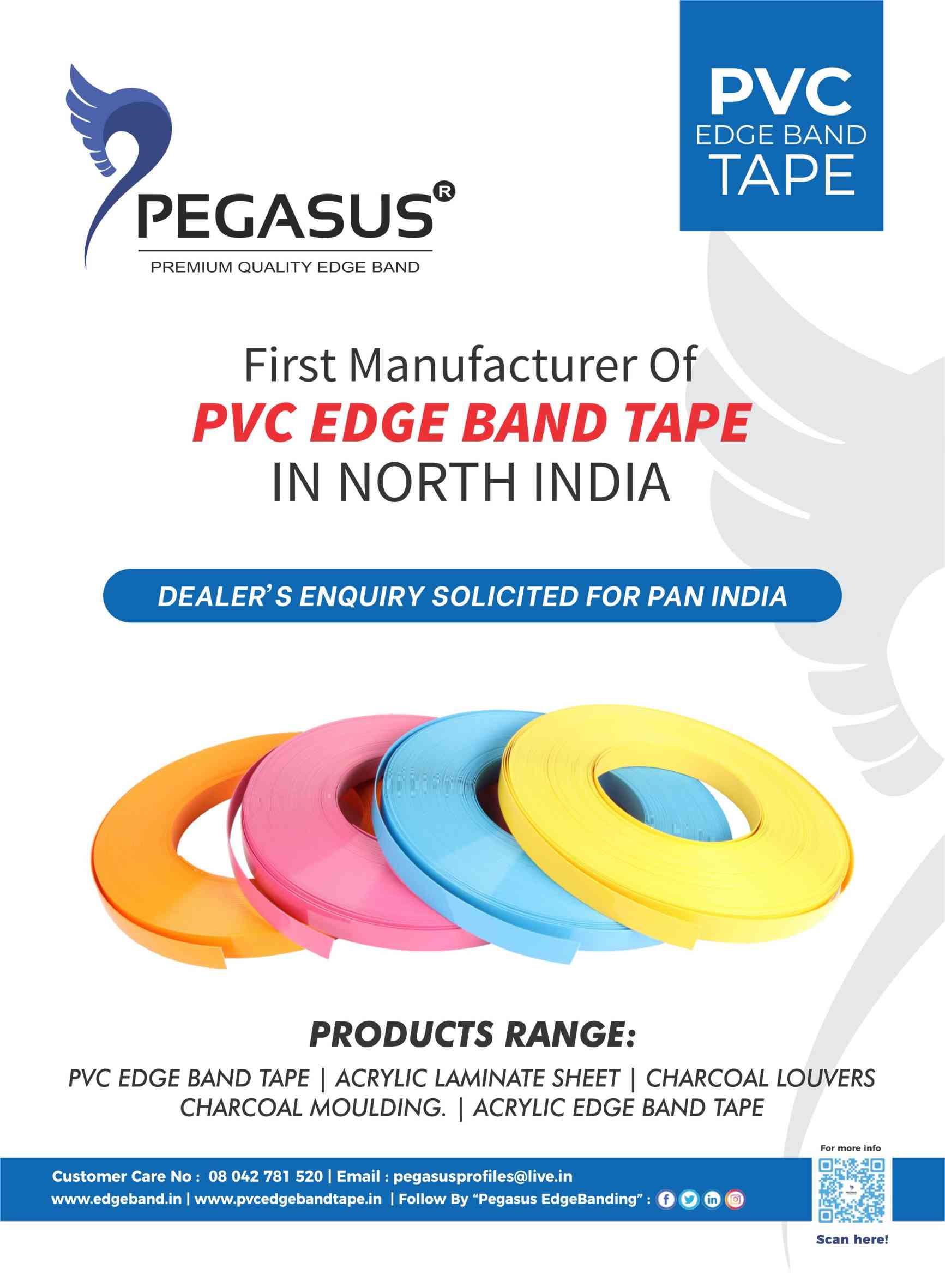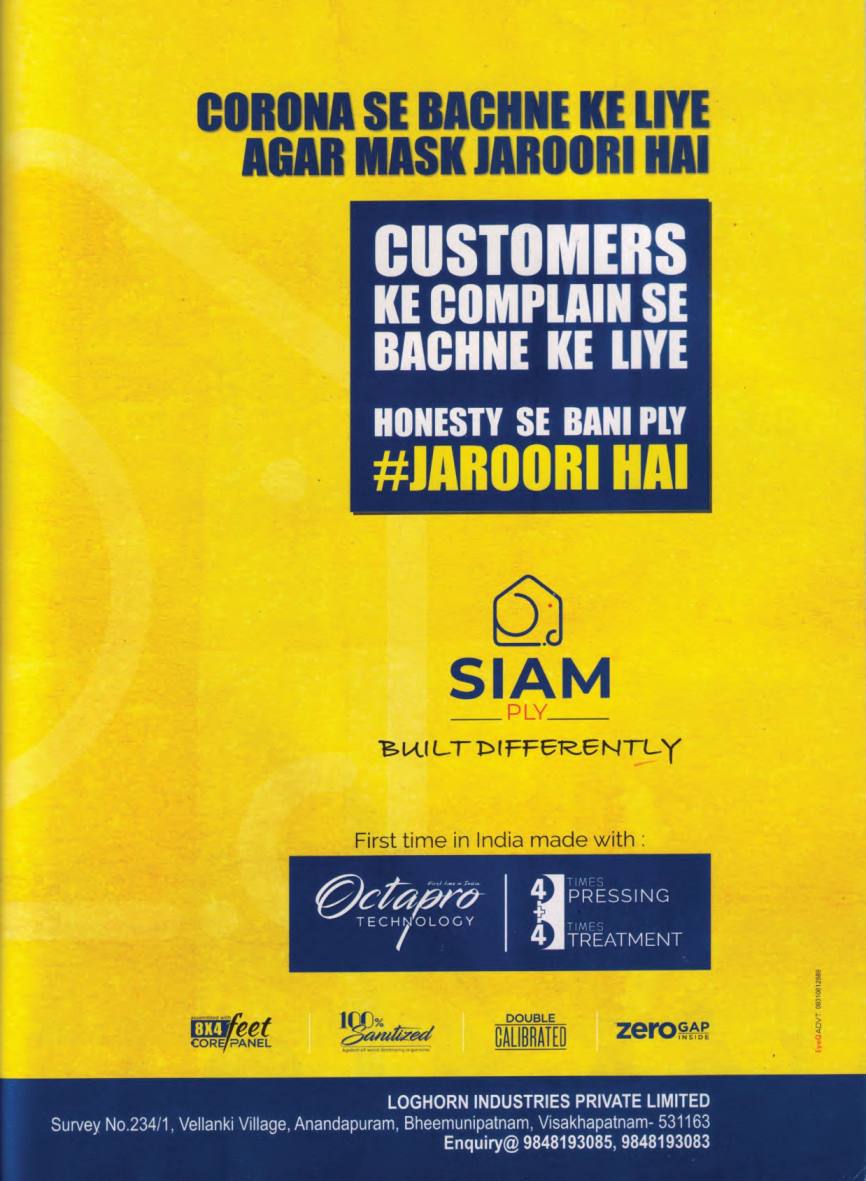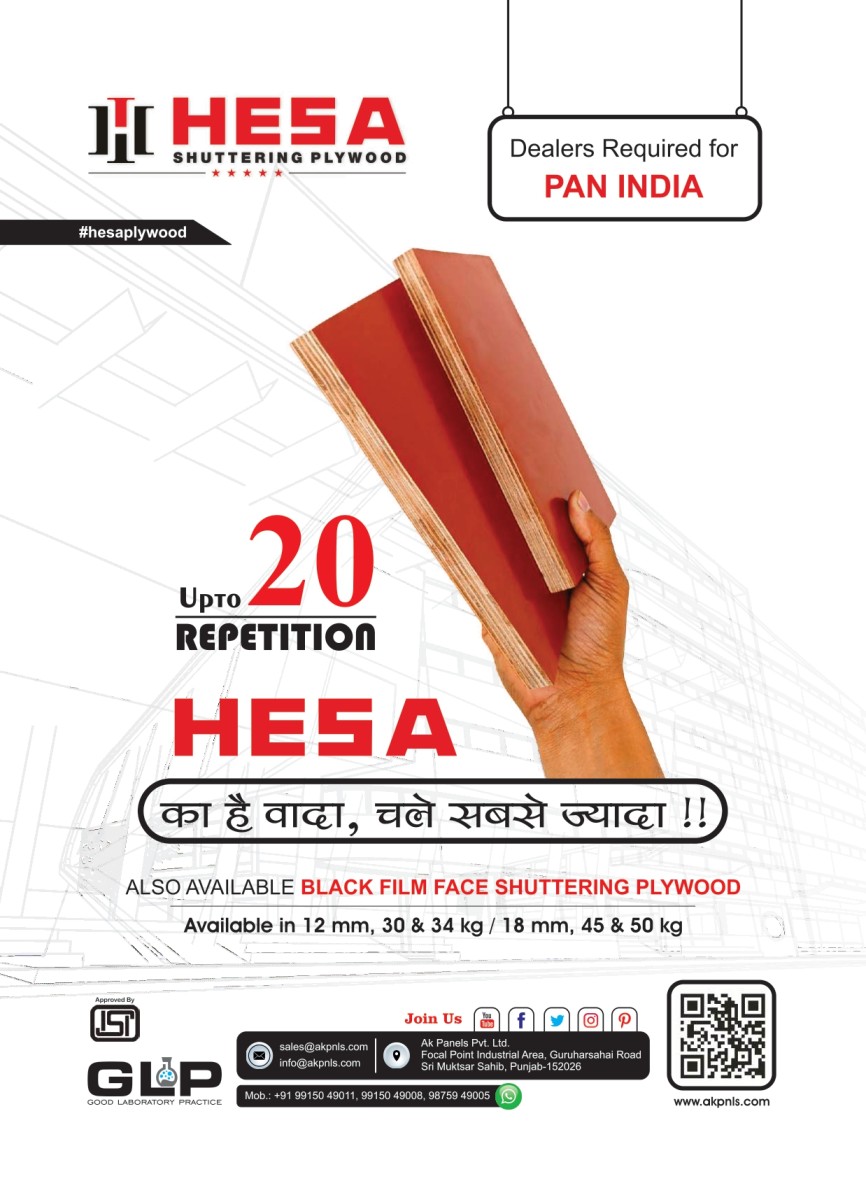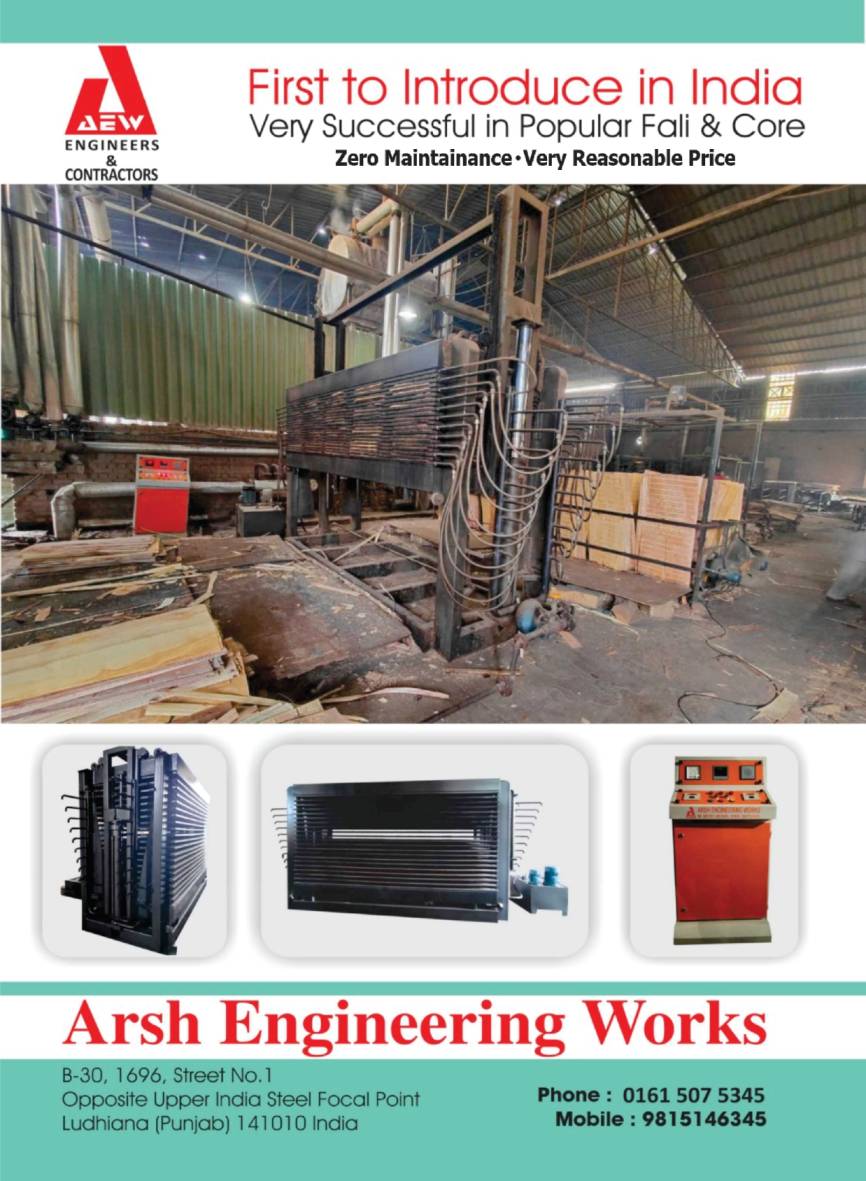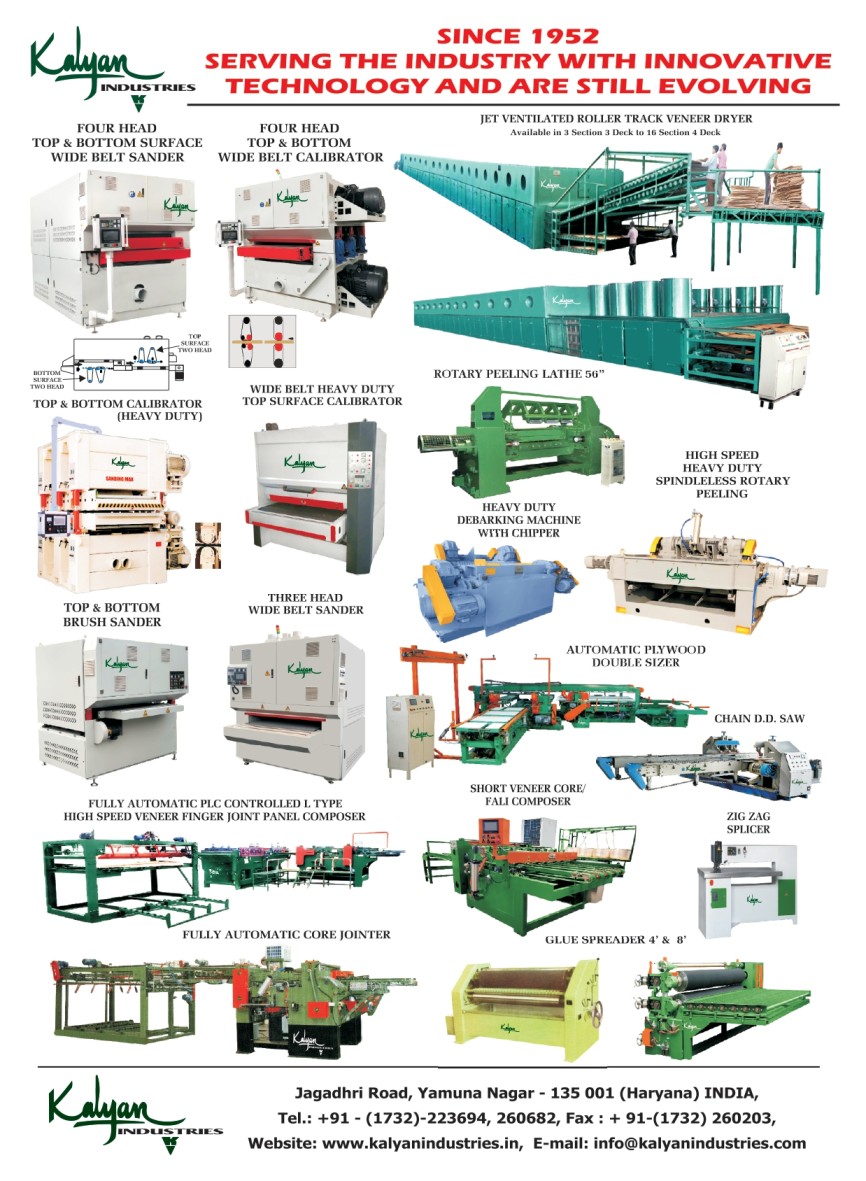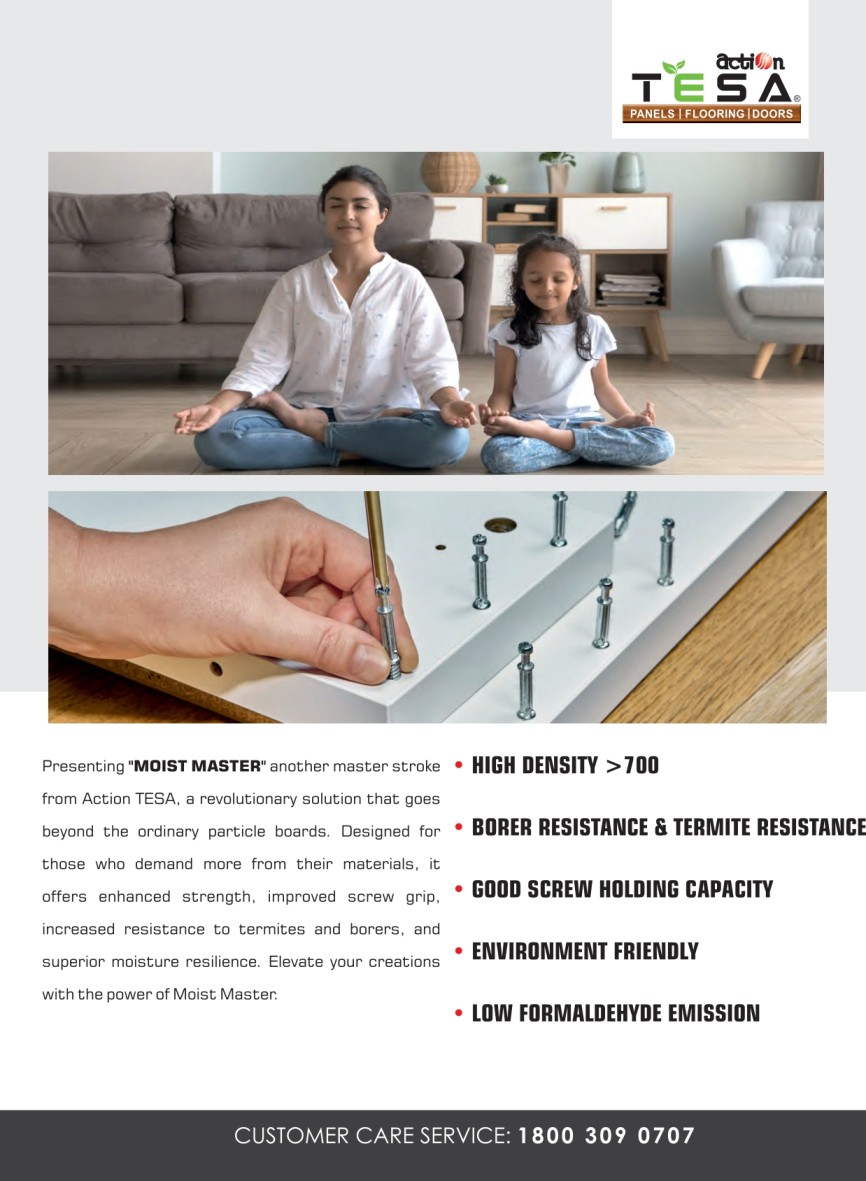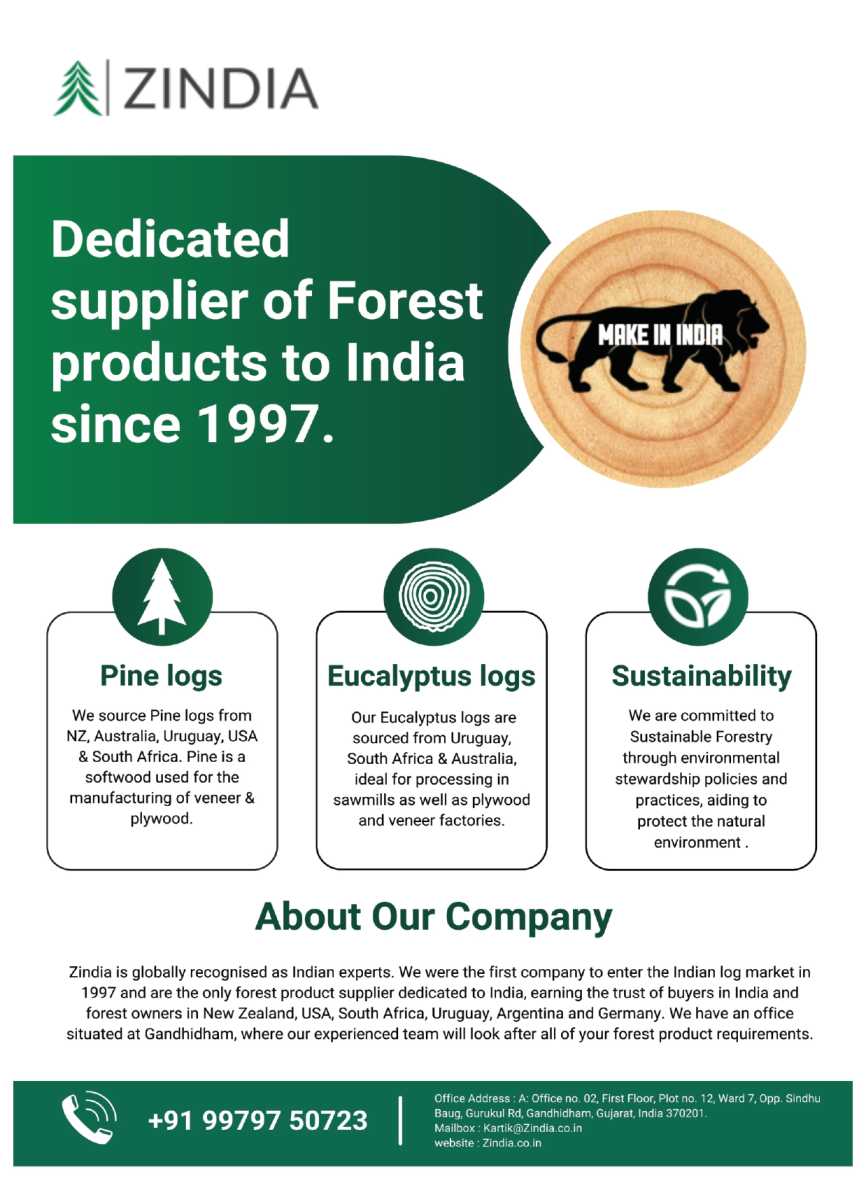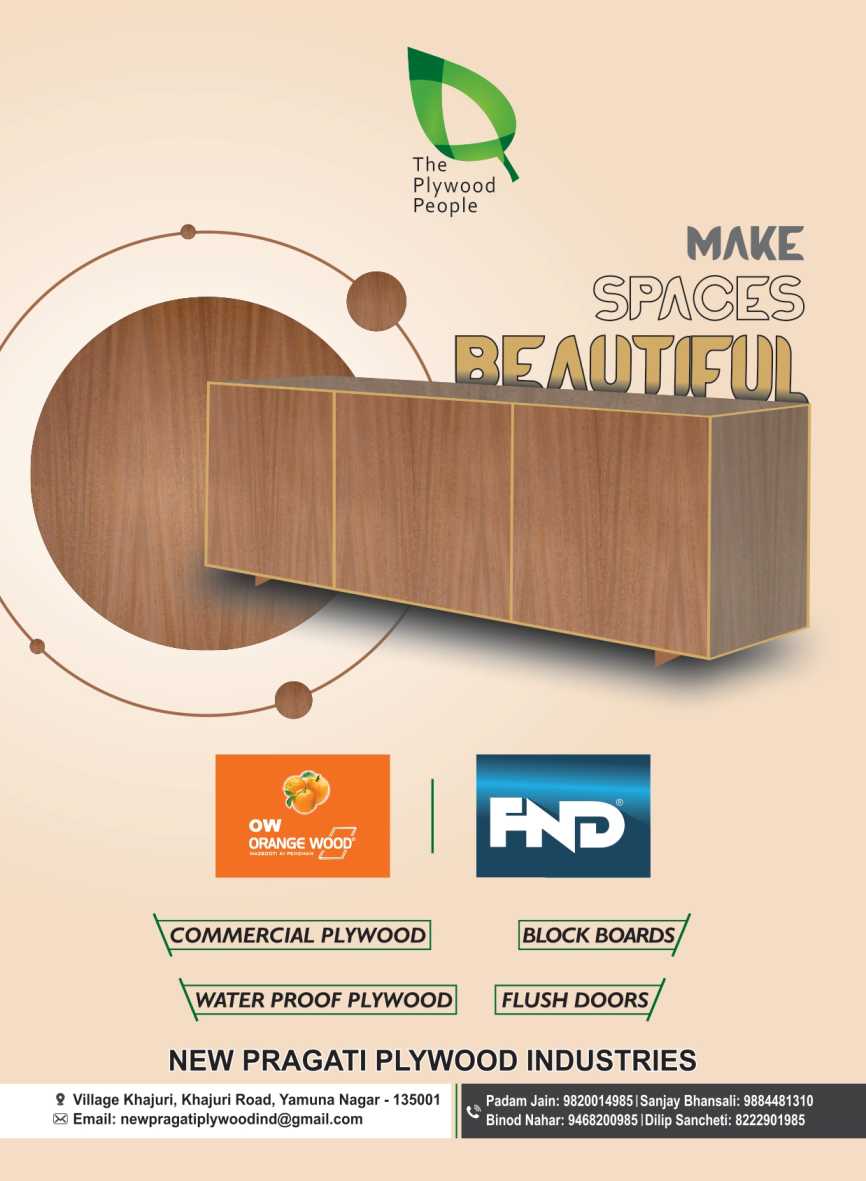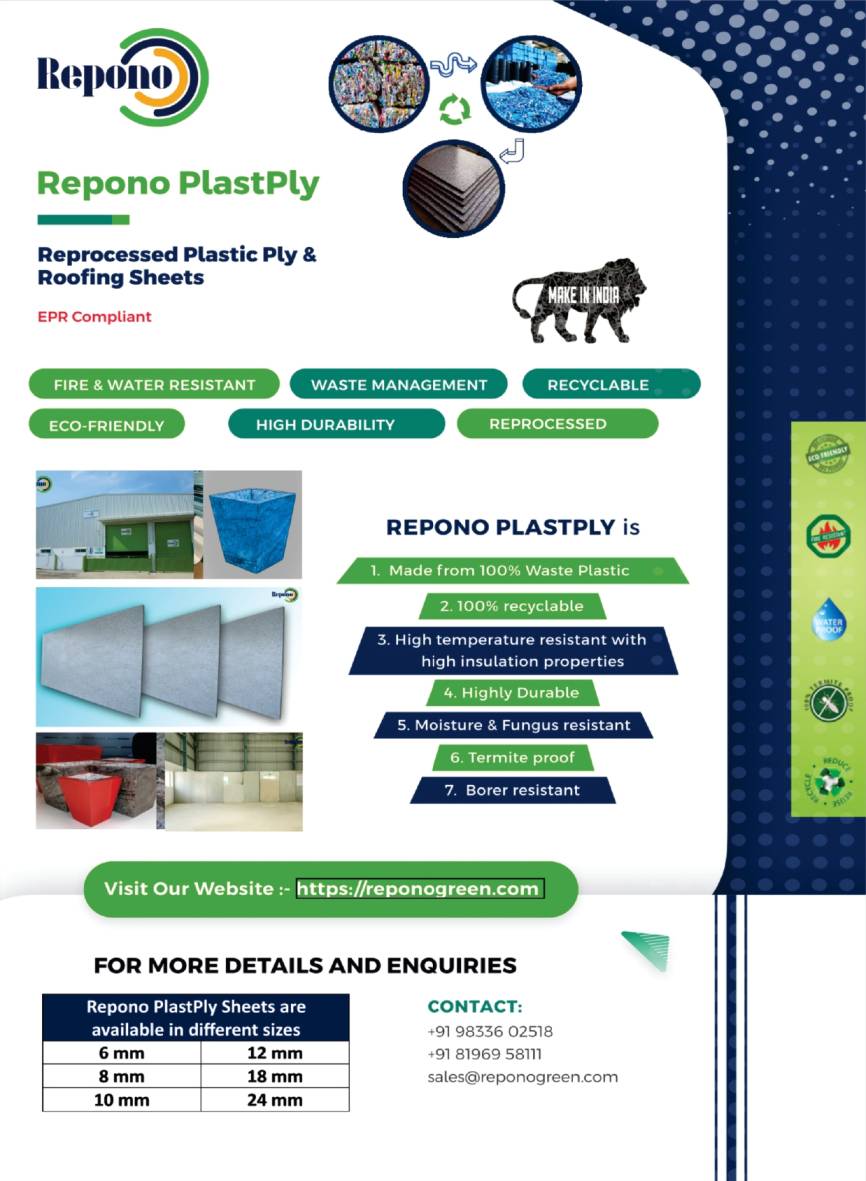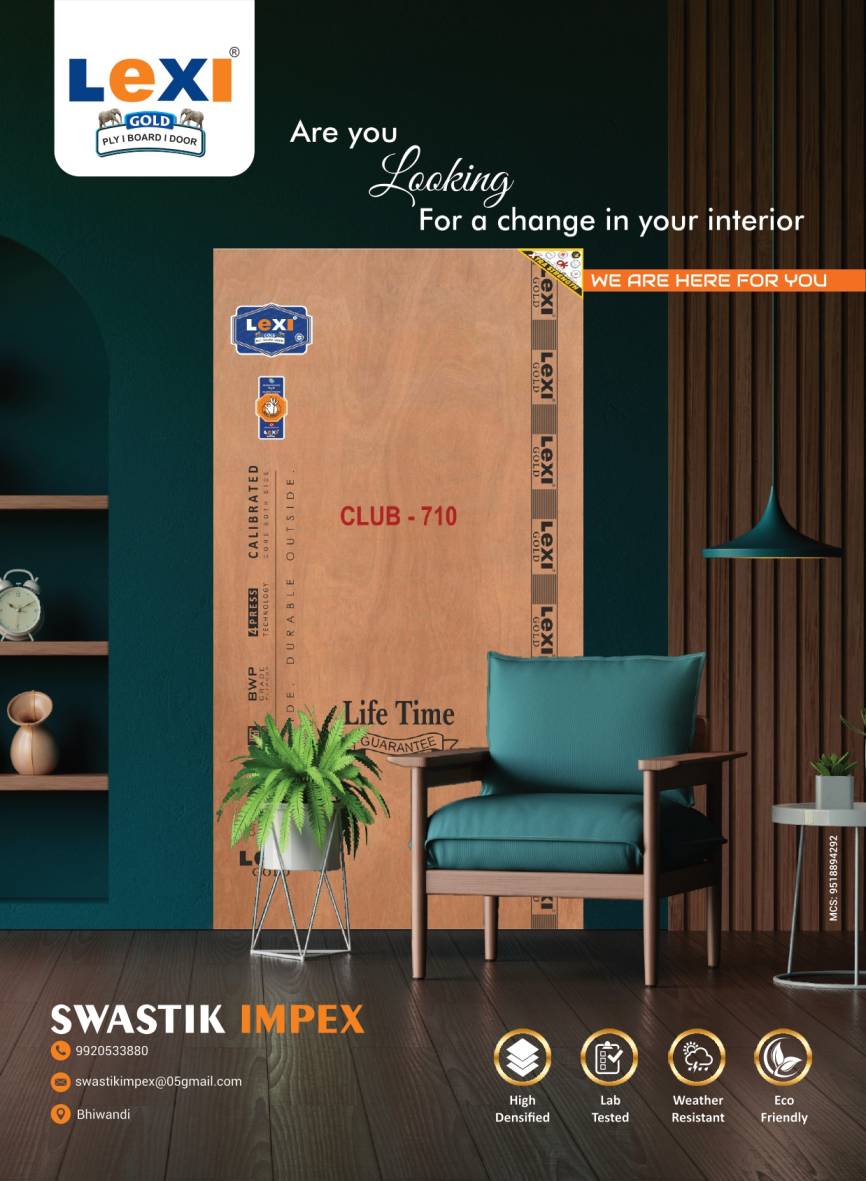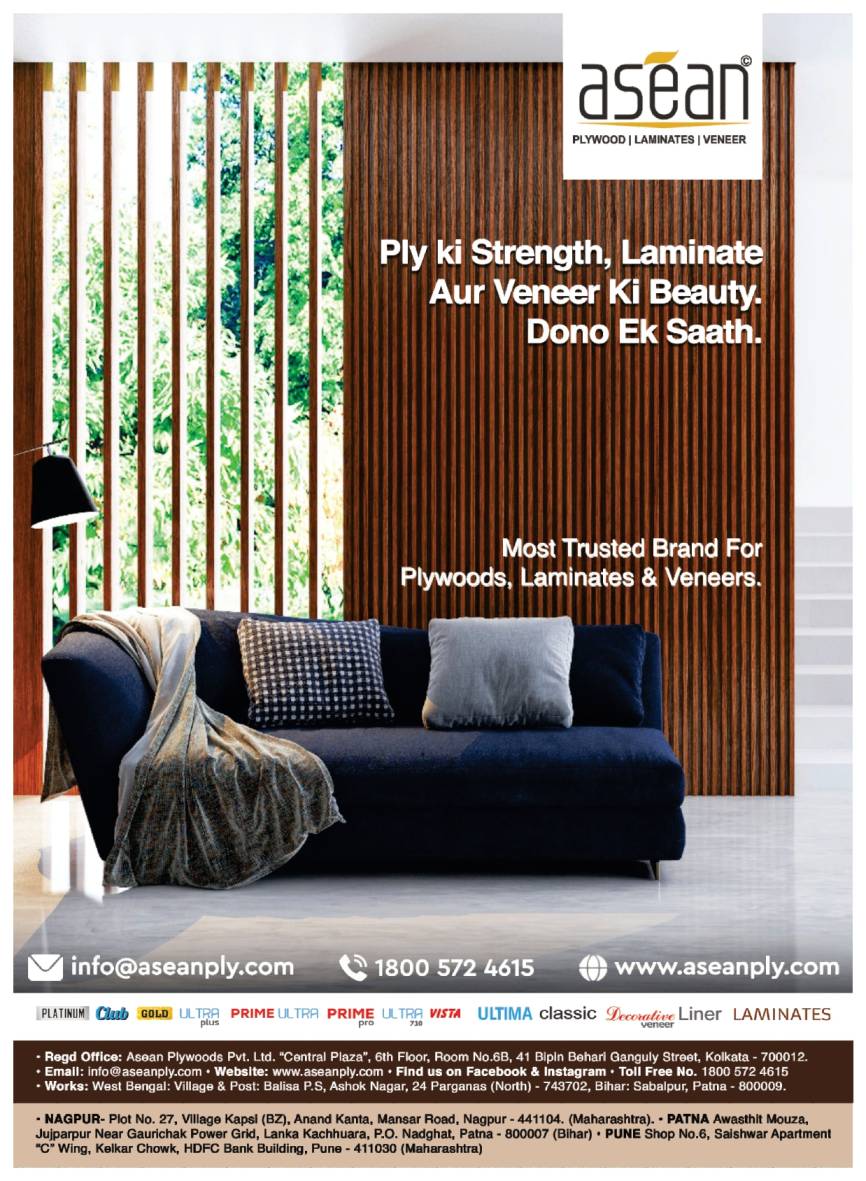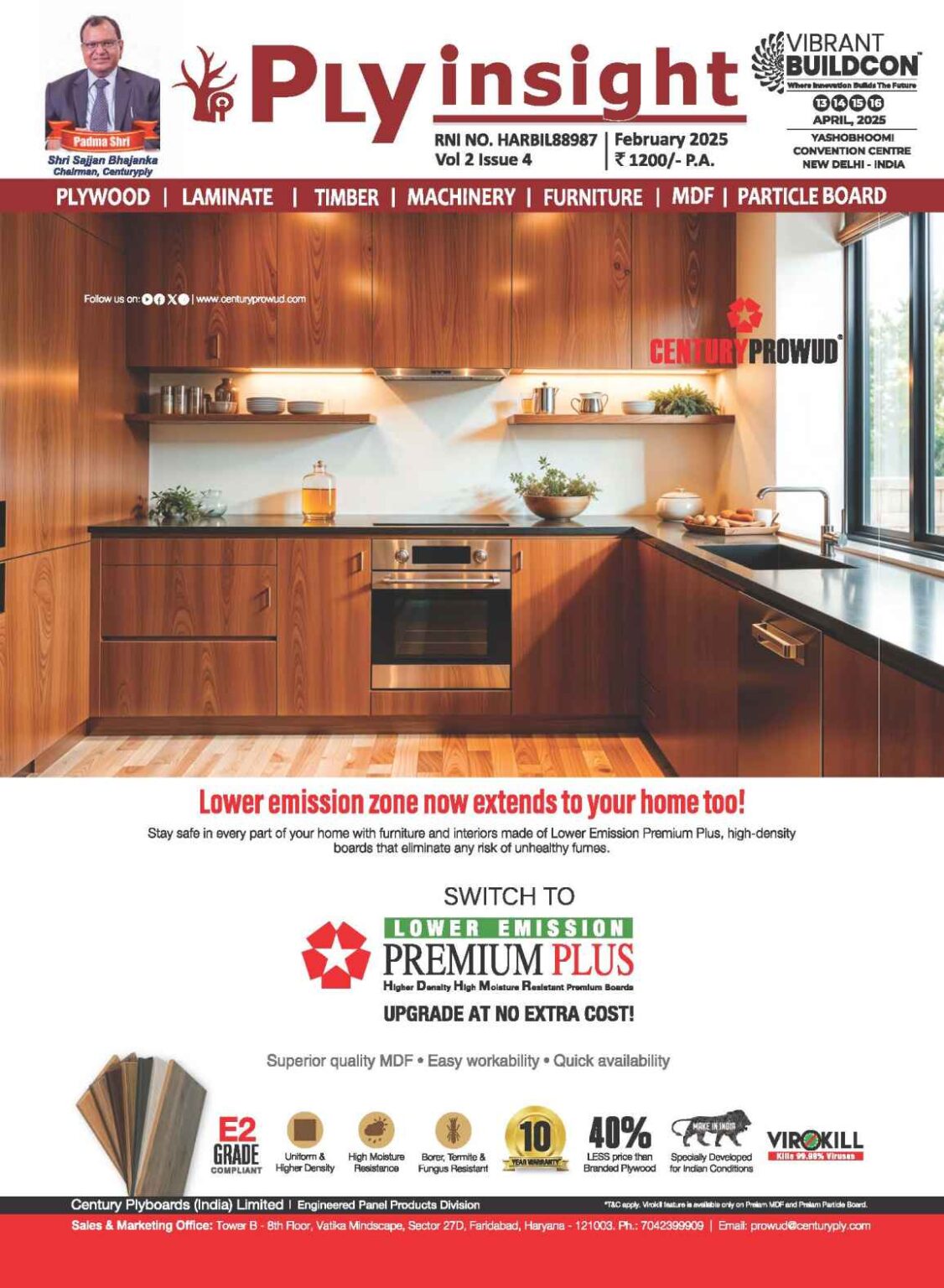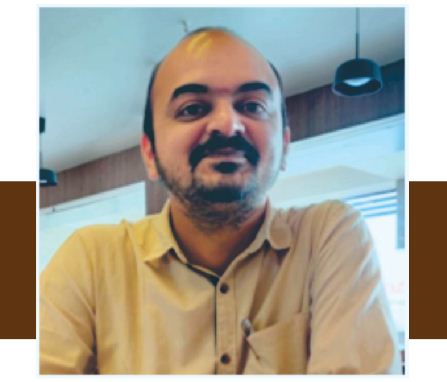
E0 Plywood & Boards – Standards & Practices (Part 2)
- August 31, 2021
- 0
“KRDF works on product development, process development, standardisation and skill development in manufacturing sectors ranging Sustainability, Biodegradable Single-use Materials, Alternate Natural Material Composites, Coir-Bamboo-Agrowaste Composites and Rural technologies.”
Vaidyanathan Hariharan
(Vaidya) is Founder Director – Kalpaka Research &
Development Foundation (KRDF), Ernakulam, Kerala
In continuation with the previous article on what is E0, measurement limits and quality control test measurements & units, we shall discuss what is the basis of formaldehyde emission from composite boards made out of wood & ligno-cellulosic panels made with formaldehyde based synthetic resins.
Why is Formaldehyde emitted/released from cured panels?
Formaldehyde release from cured boards/panels occurs due to two reasons – free formaldehyde content & formaldehyde (CH2O) released due to hydrolysis in high moisture environments and related factors.
Formaldehyde Content
“Content” refers to the free CH2O present in composite boards. This happens due to the existence of un-reacted free CH2O present in resin used as binder. CH2O content management depends on molar ratio of resin materials, extent of cooking (temperature, pH, speed, time factors), molecular weight consistency, scavenger efficiency, free CH2O present in wood species (Wood contains, and is capable of emitting CH2O under various environmental factors. Though negligible, it adds to the emission values during testing.)
Perforator test provides the measurement of CH2O “content” in the boards, and is reported per 100 grams of oven dry board. Perforator is a content extraction process apparatus.
Formaldehyde Emission
Even if there is no free formaldehyde found in the manufactured resin as well as cured boards, formaldehyde keeps getting released over the operative life of product due to hydrolysis of the cured resin under various operative conditions (when the panels are used in homes & offices) such as temperature of surroundings, humidity (moisture content), air flow (ventilation), and HVAC (heating, ventilation, air conditioning) parameters in general. This is referred to as CH2O “emission”. Emission values are also affected significantly by the rate & extent of curing in the hot pressed boards.
Desiccator, Flask, Gas Analysis, Chamber methods of testing are CH2O emission testing processes.
NOTE: Contrary to Indian practice of using the Perforator test apparatus for CH2O measurements in hardwood plywood (HWPW), we must be aware that it has been removed from approved list of QC tests for HWPW by ARB (Air Resources Board, California) and EPA (Environment Protection Agency, USA). It is suggested that plywood manufacturers use the JIS A-1460 Desiccator for internal QC tests which is approved for “all manufacturers” irrespective of the composite board product, when exporting to North American countries.
FACT: Phenol formaldehyde resins always return E0 values in all forms of testing provided the resin manufacture is maintained at precise molar ratio, temperature of cooking & resin molecular weights (viscosity without additives). When fully cured, these resins undergo negligible hydrolysis under the regular board installation environments & are perfectly safe to use interiors.
Debates continue on the efficacy of various tests. Yet, the “emission” tests are usually considered more realistic, considering the application/installation surroundings of the composite boards, though there is also a concern that only a small amount of exposure is being considered/tested during factory quality control test conditions, compared to Chamber methods of steady-state emission testing. For safe and confident supply of guaranteed emission based boards, it is always suggested to perform scheduled (say quarterly) third party chamber tests for confirmation (if the factory does not have CARB/EPA/BS/JIS/ISO CH2O emission certifications), in addition to internal QC tests.
[Next issue – Part 3: E0 manufacturing parameter chart, details of JIS A 1460 desiccator QC test]
https://www.linkedin.com/in/krdf
krdfindia@outlook.com
E0 क्या है, माप सीमा और गुणवत्ता नियंत्रण परीक्षण माप और इकाइयों पर पिछले लेख की निरंतरता में, हम चर्चा करेंगे कि फॉर्मलाडेहाइड आधारित सिंथेटिक रेजिन से बने लकड़ी और लिग्नो-सेल्युलोसिक पैनलों से बने मिश्रित बोर्डों से फॉर्मलाडेहाइड उत्सर्जन का आधार क्या है।
फॉर्मल्डेहाइड को क्युर्ड पैनलों से उत्सर्जित/मुक्त क्यों किया जाता है?
क्युर्ड बोर्डों/पैनलों से फॉर्मलडिहाइड रिलीज दो कारणों से होता है -मुफ्त फॉर्मलाडेहाइड सामग्री और उच्च नमी वाले वातावरण एवं सम्बंधित कारकों में हाइड्रोलिसिस के कारण फॉर्मलाडेहाइड (CH2O) उत्सर्जन होता है।
फॉर्मलडिहाइड मात्रा
“मात्रा” समग्र बोर्डों में मौजूद मुक्त CH2O को संदर्भित करता है। यह बाइंडर के रूप में उपयोग किए जाने वाले रेजीन में मौजूद गैर-प्रतिक्रिया मुक्त CH2O के अस्तित्व के कारण होता है। CH2O सामग्री प्रबंधन रेजीन सामग्री के मोलर अनुपात, पकाने की सीमा (तापमान, पीएच, गति, समय कारक), आणविक भार स्थिरता, मेहतर दक्षता, लकड़ी की प्रजातियों में मौजूद मुक्त CH2O (लकड़ी में शामिल है, और विभिन्न पर्यावरणीय कारक के तहत CH2O उत्सर्जित करने में सक्षम है। हालांकि नगण्य है, यह परीक्षण के दौरान उत्सर्जन मूल्यों को दर्शाता है।)
परफोरेटर परीक्षण बोर्डों में CH2O “मात्रा” का माप प्रदान करता है, और प्रति 100 ग्राम ओवन ड्राई बोर्ड की जानकारी दी जाती है। परफोरेटर एक सामग्री निष्कर्षण प्रक्रिया उपकरण है।
फॉर्मलडिहाइड उत्सर्जन
भले ही निर्मित रेजीन के साथ-साथ क्युर्ड बोर्डों में कोई मुक्त फॉर्मलाडेहाइड नहीं पाया जाता है, विभिन्न परिचालन स्थितियों (जब घरों और कार्यालयों में पैनलों का उपयोग किया जाता है) के तहत क्युर्ड रेजीन के हाइड्रोलिसिस के कारण फॉर्मलाडेहाइड उत्पाद के परिचालन जीवन पर जारी होता रहता है। जैसे परिवेश का तापमान, आर्द्रता (नमी सामग्री), वायु प्रवाह (वेंटिलेशन), और सामान्य रूप से एचवीएसी (हीटिंग, वेंटिलेशन, एयर कंडीशनिंग) पैरामीटर। इसे CH2O “उत्सर्जन” कहा जाता है। हॉट प्रेसेड बोर्डों में क्यूरिंग की दर और सीमा से उत्सर्जन मूल्य भी महत्वपूर्ण रूप से प्रभावित होते हैं।
CH2O उत्सर्जन परीक्षण प्रक्रियाएं डिसेकेटर, फ्लास्क, गैस विश्लेषण, चैम्बर, परीक्षण के तरीके है।
नोट: हार्डवुड प्लाईवुड (HWPW) में CH2O मापन के लिए परफोरेटर टेस्ट उपकरण का उपयोग करने के भारतीय अभ्यास के विपरीत, हमें पता होना चाहिए कि इसे ARB (वायु संसाधन बोर्ड, कैलिफ़ोर्निया) और EPA (पर्यावरण संरक्षण एजेंसी, यूएसए) द्वारा HWPW के लिए QC परीक्षणों की अनुमोदित सूची से हटा दिया गया है। । यह सुझाव दिया जाता है कि प्लाइवुड निर्माता आंतरिक क्यूसी परीक्षणों के लिए जेआईएस ए-1460 डेसीकेटर का उपयोग करे, जो उत्तर अमेरिकी देशों को निर्यात करते समय समग्र बोर्ड उत्पाद के बावजूद “सभी निर्माताओं” के लिए अनुमोदित है।
तथ्य: फिनोल फॉर्मलाडेहाइड रेजिन हमेशा परीक्षण के सभी रूपों में E0 मान लौटाते हैं बशर्ते रेजीन निर्माण सटीक मोलर अनुपात, पकाने के तापमान और राजीन आणविक भार (एडिटिव्स के बिना चिपचिपापन) पर बनाए रखा जाए। जब पूरी तरह से क्यूर्ड हो जाता है, तो ये रेजिन नियमित बोर्ड स्थापना वातावरण के तहत नगण्य हाइड्रोलिसिस से गुजरते हैं और आंतरिक रूप से उपयोग करने के लिए पूरी तरह से सुरक्षित होते हैं।
विभिन्न परीक्षणों की प्रभावकारिता पर बहस जारी है। फिर भी, “उत्सर्जन” परीक्षणों को आमतौर पर अधिक यथार्थवादी माना जाता है, समग्र बोर्डों के अनुप्रयोग / स्थापना परिवेश को देखते हुए, हालांकि एक चिंता यह भी है कि कारखाने की गुणवत्ता नियंत्रण स्थिर-स्थिति परीक्षण, उत्सर्जन परीक्षण के चैंबर तरीके की तुलना में, केवल थोड़ी मात्रा में जोखिम पर विचार / परीक्षण किया जा रहा है। । गारंटीकृत उत्सर्जन आधारित बोर्डों की सुरक्षित और भरोसेमंद आपूर्ति के लिए, हमेशा पुष्टि के लिए अनुसूचित (जैसे त्रैमासिक) तीसरे पक्ष द्वारा चैम्बर परीक्षण करने का सुझाव दिया जाता है (यदि कारखाने में आंतरिक क्यूसी परीक्षणों के अलावा CARB/EPA/BS/JIS/ISO CH2O उत्सर्जन प्रमाणन नहीं है), ।

